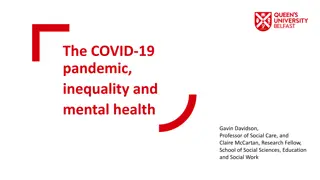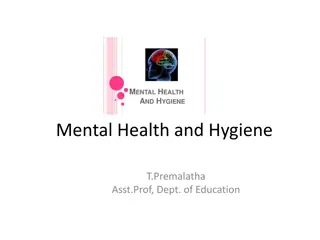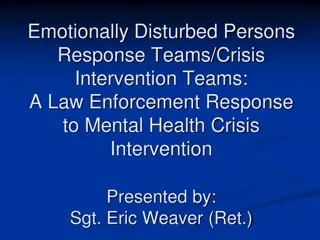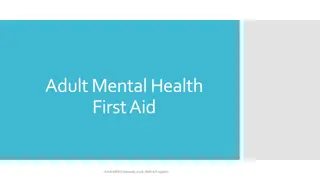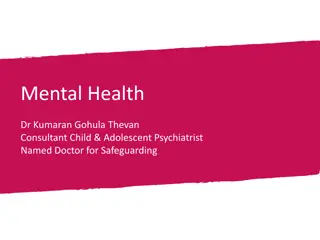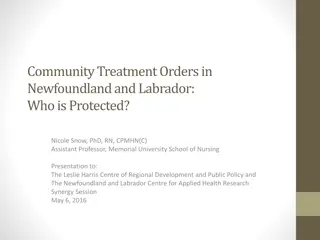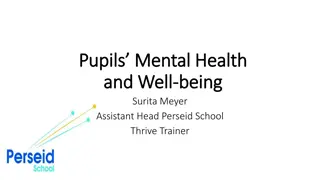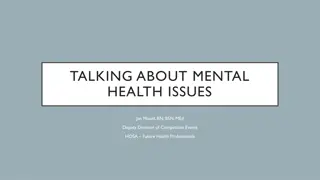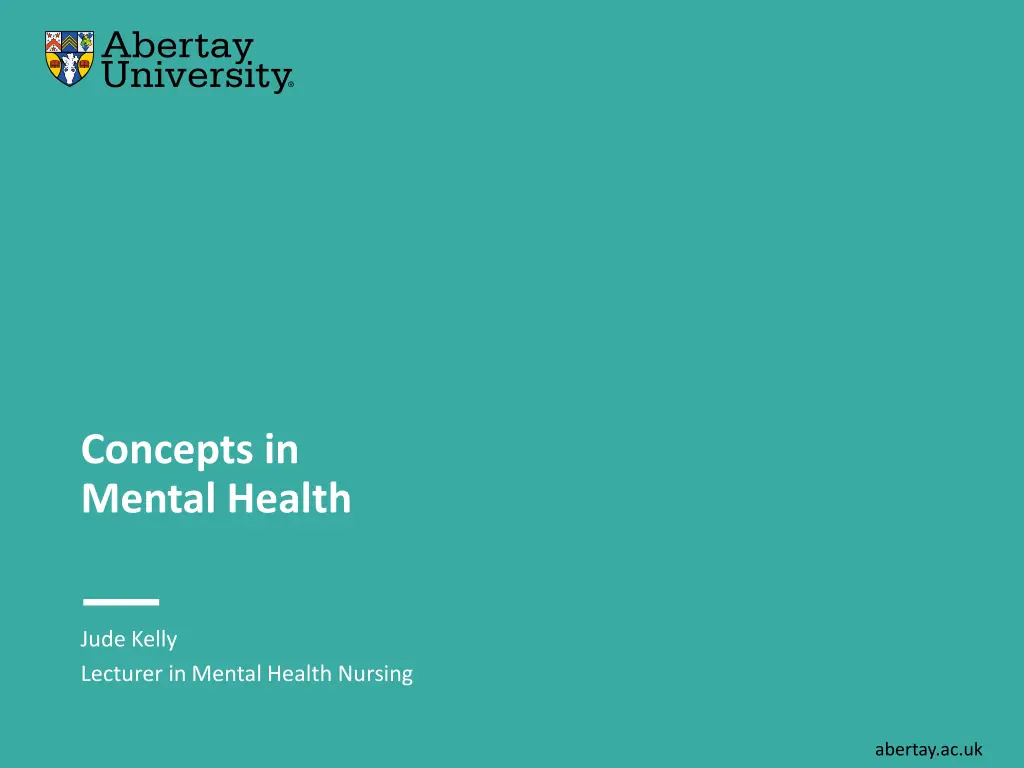
Understanding Concepts in Mental Health: Definitions and Models
Explore the key concepts in mental health including definitions, models, and prevalence of mental illness. Understand the difference between mental health and mental illness, and learn about factors influencing mental health using biopsychosocial models. Dive into the continuum model of mental health and gain insights into the prevalence of mental illness in society.
Download Presentation

Please find below an Image/Link to download the presentation.
The content on the website is provided AS IS for your information and personal use only. It may not be sold, licensed, or shared on other websites without obtaining consent from the author. If you encounter any issues during the download, it is possible that the publisher has removed the file from their server.
You are allowed to download the files provided on this website for personal or commercial use, subject to the condition that they are used lawfully. All files are the property of their respective owners.
The content on the website is provided AS IS for your information and personal use only. It may not be sold, licensed, or shared on other websites without obtaining consent from the author.
E N D
Presentation Transcript
Concepts in Mental Health Jude Kelly Lecturer in Mental Health Nursing abertay.ac.uk
Session Outline Defining mental health problems Models of mental illness Prevalence of mental illness abertay.ac.uk
Mental Health or Mental Illness? Split into two groups One group to discuss and define the concept of mental health and the other to discuss and define the concept of mental illness abertay.ac.uk
Definition of Mental Health "Mental health is defined as a state of well-being in which every individual realises his or her own potential, can cope with the normal stresses of life, can work productively and fruitfully, and is able to make a contribution to her or his community." (World Health Organisation, 2014) abertay.ac.uk
Definition of Mental Illness A mental illness is a condition that affects a person's thinking, feeling or mood. Such conditions may affect someone's ability to relate to others and function each day. Each person will have different experiences, even people with the same diagnosis." (National Alliance on Mental Illness, 2017) abertay.ac.uk
Mental Health Continuum abertay.ac.uk
The Continuum Model of Mental Health abertay.ac.uk
Biopsychosocial Model of Mental Health What factors influence Mental Health? Biological Psychological / Cognitive Sociological abertay.ac.uk
Biopsychosocial Model of Mental Health abertay.ac.uk
Prevalence of Mental Illness One in four people will experience a mental health problem this year In Scotland over 300 mental health consultations for every 1000 people seen in practice during a year These are predominantly depression or anxiety Depression is the commonest contributing diagnosis for Scots visiting their GP Antidepressants were dispensed to 814,181 patients in 2014/15. Since 2009/10, use of antidepressants has increased by 28.5% abertay.ac.uk
Wise up to mental health! Question 1: Question 2: What % of employers would consider employing someone with a mental health problem? In the last 50 years, the % of murders committed by people with mental health problems has: A. Fallen steadily. B. Stayed the same. C. Risen slightly. D. Risen a lot. A. 25%. B. 37%. C. 52%. D. 4%. abertay.ac.uk
Question 3: Question 4: How many people will experience some kind of mental health problem in the course of a year? What % of people with mental health problems recover and get on with their lives? A. One person per 100. B. One person in 50. C. One person in 10. D. One person in 4. A. 99%. B. 5% C. 70%. D. 33%. abertay.ac.uk
Question 5: Question 6: What % of people with mental health problems identified stigma as a barrier to employment? In 2016, The highest suicide rate in the UK was for: A. 55% B. 67% C. 27% D. 47% A. men aged 40 44. B. Women aged 18-25. C. Both men and women aged 60+. D. Men aged 25 and under. abertay.ac.uk
Question 7: Question 8: What % of people with a mental health problem would be embarrassed to disclose to a prospective employer? What % of homicides are committed by people who have not been diagnosed with a mental health problem? A. 49%. B. 64%. C. 98%. D. 19% A. 46%. B. 86% C. 95% D. 26% abertay.ac.uk
Question 9: Question 10: Which group of people is most likely to be a danger to the public? Which of these groups is unlikely to experience mental health problems? A. People with mental health problems. B. Young women under the influence of alcohol. C. Young men under the influence of alcohol. D. Students on SWAP Access to Nursing programmes? A. Doctors. B. People under the age of 25. C. People who live in rural areas. People with high incomes. abertay.ac.uk
Some things to remember: Mental health is a dynamic factor in someone s life and is every bit as important as physical health Anyone can experience mental illness Mental health interventions don t have to be complicated just talking to someone can be really helpful It is important to look after you own mental health how do you do that? abertay.ac.uk
Any Questions? abertay.ac.uk






